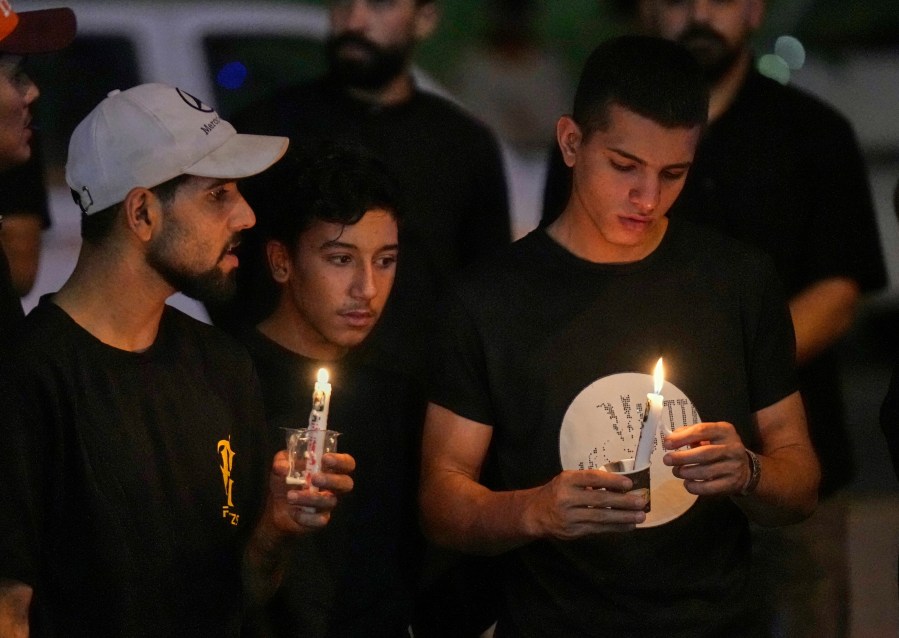How the 12-day Israel-Iran war could rebuild the Middle East

The “12-day war” between Iran and Israel, as coined by President Trump, may mark the closing chapter of Israel’s longest war. But the real victory won’t be measured by what was destroyed. It will be measured by what we build next.
For the first time in decades, Iran’s stranglehold on the Middle East has been broken. The Iran-backed network that nearly succeeded in encircling Israel — Hezbollah, Hamas, the Houthis, Iraqi militias and Assad’s Syria — is fractured. Joint Israeli-American strikes have set back Iran’s nuclear program.
As Israeli-Arab mega-influencer Nas Daily put it, this was “the world’s most silent celebration. Hundreds of millions are safer, even if they can’t say it out loud.”
Now, President Trump is building on this momentum with new normalization efforts, working toward agreements with Syria, Saudi Arabia, and other countries while pushing for an end to the Gaza war.
Yet here’s the problem: Arab public opinion is moving in the opposite direction. Support for normalization with Israel has plummeted to below 13 percent across seven Arab nations. Even in Morocco, support dropped from 31 percent in 2022 to 13 percent after the Oct. 7, 2023 terrorist attacks. Military victories mean nothing if we can’t win the peace.
Why the disconnect? Because normalization has remained too elite, too top-down. If Israel and its neighbors want lasting peace, it must be built on more than shared threats. It must rest on shared interests, shared goals and shared lives. The current moment demands a fundamental shift from managing conflict to actively building peace.
The Abraham Accords initiated this process by establishing diplomatic connections between governments. But civic ties between students, educators, and entrepreneurs haven’t kept pace.
Critics argue that past Israeli-Palestinian dialogue efforts failed because they lacked political infrastructure to support them. But that’s precisely what could make this moment different. The Abraham Accords could provide the stable political framework these initiatives need to succeed.
Real normalization requires three pillars: security integration, economic partnerships and, most crucially, human connections. Since Oct. 7, the first two pillars have largely held, but the third pillar, the human infrastructure of peace, was the first casualty of war. But when rockets fly, that’s when we most need people who see each other as human beings, not abstractions.
Consider what’s possible: summer institutes where Israeli, Emirati, Saudi and American students tackle shared challenges, such as water scarcity or clean energy. School trips that make crossing Middle Eastern borders normal for teenagers. Jewish-Muslim educator exchanges that combat both antisemitism and Islamophobia.
These aren’t feel-good programs, they’re strategic necessities.
Before the war in Gaza, we saw a glimpse of what is possible. Saudi Arabia and Egypt removed antisemitic content from textbooks. The United Arab Emirates introduced Holocaust education. Israeli youth movements led delegations to Morocco. These changes prove that education can evolve when political will exists.
The United States must lead this effort, but differently than before, evolving from a peacemaker to a peacebuilder. Large-scale regional education deserves the same funding and focus as defense systems. If the next generation only knows each other as threats, we shouldn’t be surprised when peace fails.
When this war ends, Israel will face internal fractures: healing social divides, restoring trust in institutions and national trauma. But the path forward isn’t isolation. It’s extending the hand promised in Israel’s Declaration of Independence, to “all neighboring states and their peoples.”
Crown Prince Mohammed bin Salman once envisioned the Middle East as “the new Europe.” After World War II, Europe didn’t just rebuild cities, it rebuilt relationships and identities.
Massive people-to-people efforts, such as Erasmus, the European Union’s student mobility program, created a generation of Europeans who saw themselves as part of something larger than their individual nations. This is now the challenge for the New Middle East.
Many talk about “denazifying” Gaza, but post-war Germany succeeded through more than rooting out extremism. It built a strong democratic center through education and civic engagement. The Middle East needs re-humanization, not just denazification. It’s not only about “the day after” for Gaza, but for the entire region.
The window for this transformation won’t stay open long. Iran’s regional influence has been curtailed. Arab states recognize the value of Israeli technology and security cooperation. The U.S. maintains strong relationships across the region. But Middle Eastern opportunities close as quickly as they open.
Success requires moving beyond the traditional cycle of conflict and temporary calm. It means investing in the unglamorous work of education, exchange and economic integration. It means recognizing that sustainable peace requires not just government agreements, but popular support.
The alternative is a return to the old patterns. Iran will rebuild its proxy network. New extremist groups will emerge. The cycle of violence will continue.
The next generation deserves better than inheriting our war stories. They should inherit opportunity, a Middle East connected not just by pipelines and defense pacts, but by classrooms, laboratories and shared dreams.
Let this be the last war of the old Middle East, and the first step toward the new one.
Barak Sella is the Middle East Initiative Fellow at the Harvard Kennedy School of Government.